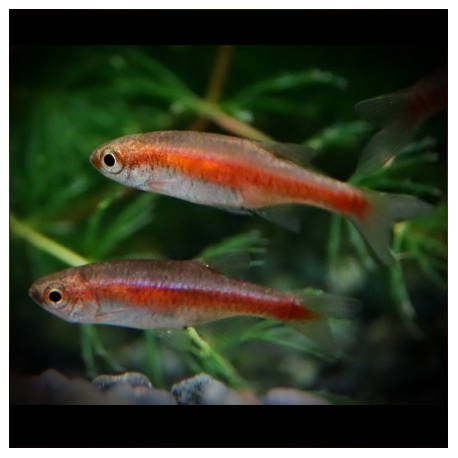More info
Datasheet
| Minimum Tank Size | 60 litres / 15.85 US gallons |
| Maximum Size | 4.0cm / 1.57inches |
| Temperature | 20°C / 68.00°F - 26°C / 78.80°F |
| Hardness | 1.01dgH / 18ppm - 10.03dgH / 179ppm |
| pH | 6.5-7.5 |
General Description
The Microrasbora cf. Rubescens, commonly known as Flame Red 'Rasbora', is an intriguing fish species possibly yet to be formally described. It is larger than the Microrasbora rubescens, showcasing a greenish to bluish lateral stripe with less orange pigmentation on its body. Belonging to the Cyprinidae family, these fish are distinguished by their preference for shallow, still or slow-moving habitats in forest peat swamps. The species is a part of the Cypriniformes order and is classified under the genus Microrasbora.
Aquarium Setup
Maintaining the Microrasbora cf. Rubescens in a densely-planted tank with gentle filtration is recommended. This species thrives in an aquascaped environment, benefiting from the addition of floating plants and driftwood to diffuse light. The ideal water conditions for these fish include a pH range of 6.5-7.5, a temperature between 20-26°C, and a hardness level of 18-179ppm (see table).
Behaviour
These fish tend to be easily intimidated or outcompeted by larger or more active tankmates for food. However, when housed with similarly-sized surface-dwelling species, the shyness of the Microrasbora cf. Rubescens tends to decrease. They are naturally shoaling fish, so keeping them in groups of 8-10 individuals enhances their comfort and displays more natural behavior, including colorful displays during mating rituals.
Feeding and Diet
In their natural habitat, these fish primarily feed on small invertebrates, algae, and zooplankton. Newly-imported specimens may struggle to adjust to aquarium life, necessitating a diet of small live foods initially. As they acclimate, introducing dry and frozen products to their diet is recommended for a balanced nutrition intake.
Reproduction & Dimorphism
Information on the reproduction of Microrasbora cf. Rubescens is limited, although similarities with M. rubescens suggest random scattering of eggs among aquatic vegetation without parental care. Mature females are typically larger and deeper-bodied compared to the more compact and colorful males. Spawning in controlled conditions can yield around 30 eggs per event, leading to the emergence of fry within a few days.
Habitat and Distribution
These fish are collected in Myanmar alongside Celestichthys margaritatus, inhabiting areas associated with the Salween River in southern Shan State. While the precise distribution pattern of M. cf. Rubescens remains uncertain, its presence in the same region as related species suggests a similar habitat preference. The species showcases miniaturization, a unique trait among cyprinids, adapting to nutrient-poor habitats like forest peat swamps.

